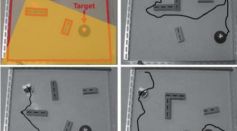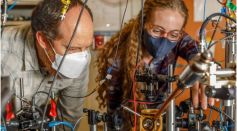TECH & INNOVATION

Japan Develops 'Thinking Robot' Through Physical Reservoir Computing; Learns and Moves by Artifical Neurons

First GPS-Free Device Developed with Quantum Mechanics Could Start New Era of Navigation

Smart Alarm Clocks vs Standard Versions: New Clocks Do Not Have Backup Batteries That Others Use for Decades
Brain Implant Restores Vision Impairment, Helping a Blind Teacher See the Alphabet Again
Flying Car: Soon a Reality, Canadian Tech Team Comes One Step Closer to Completion of the Invention

Cow Manure Turned Into Filter to Make Drinking Water from Seawater

Facebook Will Get a New Name Soon; Mark Zuckerberg's Rebranding Scheme Focused on the Metaverse

Google Maps Display Blacked Out Strange Island Baffling People Online

Most Effective Cyber Security Defense Strategies

How Difficult Is It to Develop AI That Thinks Like Humans? Researcher Try To Find Out

Glucose Level Detector Will Help You Check Blood Sugar Using Perspiration; Here’s How It Works
Solar Cell Enhancement: New Research Reveals Perovskites with High Photovoltaic Efficiency
Photobiomodulation Therapy Could Potentially Treat Neurodegenerative, Other Brain Disorders Using Near-Infrared Light

How Does Light-Induced Degradation Reduce Efficiency of Silicon Solar Cells? Scientists Explore This Problem
Most Popular

Universe Origin Revealed: Exploring the Latest Big Bang Science Theories and Discoveries

Big Bang Physics and Cosmology: Can Science Really Explain the Origins of the Universe?

Space Tourism Future: How Commercial Space Travel Will Transform Civilian Exploration

How Space Observation and the Solar Light Spectrum Make the Sun Look Different in Space Than on Earth





